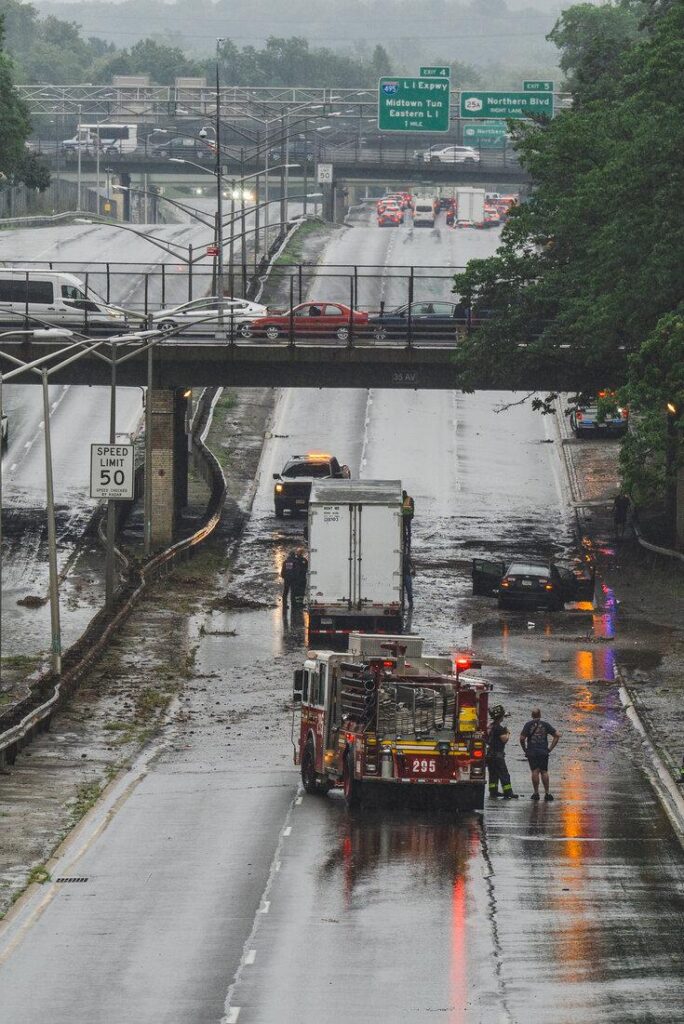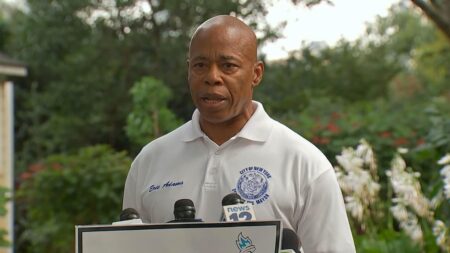Severe Storms Trigger Emergency Declarations in New York City and New Jersey
Overview of Emergency Declarations Amid Intense Rainfall
In response to a series of powerful afternoon storms delivering record-breaking rainfall, both New York City and New Jersey have declared states of emergency. These declarations empower local authorities to rapidly deploy resources and coordinate efforts to address flooding and other storm-related hazards. Mayor Eric Adams of NYC highlighted that this proactive stance allows city agencies to work seamlessly in protecting residents and infrastructure. Similarly, New Jersey Governor Phil Murphy announced a statewide emergency, emphasizing the activation of the National Guard, opening of emergency shelters, and issuing travel warnings for flood-prone areas.
Weather forecasts predict rainfall amounts exceeding four inches in some locations within just a few hours, surpassing typical seasonal precipitation levels and raising concerns about widespread flooding and infrastructure strain.
| Location | Time of Declaration | Primary Focus |
|---|---|---|
| New York City | 10:00 AM | Rapid Resource Deployment & Public Safety Alerts |
| New Jersey | 9:30 AM | Statewide Emergency Activation & Shelter Preparation |
Storm Impact on Transportation and Urban Infrastructure
The relentless downpour has severely affected transportation networks and urban infrastructure across the metropolitan area. Floodwaters have submerged key roadways, forcing closures and creating hazardous driving conditions. Subway systems in Manhattan and the Bronx experienced water intrusion, leading to service interruptions and delays. Additionally, critical utilities such as electrical grids and communication lines faced disruptions, with crews working around the clock to restore services and prevent further outages.
- Subway interruptions: Several lines halted due to track flooding
- Major highway shutdowns: NJ Turnpike and FDR Drive among affected routes
- Emergency response: Deployment of pumps and sandbag barriers in vulnerable neighborhoods
Commuters encountered significant delays, with many stranded or forced to find alternate routes. Public transit delays frequently exceeded 60 minutes during peak hours, while ride-share demand surged amid growing road congestion caused by detours. Officials strongly advise avoiding non-essential travel and staying updated through official channels.
| Incident | Area | Response Time |
|---|---|---|
| Flooded Subway Stations | Manhattan, Bronx | Within 30 minutes |
| Highway Closures | New Jersey Turnpike | 45 minutes |
| Power Outages | Staten Island | 1 hour |
Coordinated Emergency Response Efforts
Local and state agencies have rapidly mobilized to address the challenges posed by the severe storms. Police, fire departments, and emergency medical teams are collaborating closely to manage flood control, road closures, and power restoration. Emergency Operations Centers have been activated to maintain continuous communication between municipal and state officials, ensuring timely assistance to affected populations.
Public advisories are being disseminated through multiple platforms, urging residents to limit travel and stay informed via official updates. The National Guard has been deployed in strategic locations to support evacuation efforts and provide logistical assistance.
| Action Taken | Agency Responsible | Current Status |
|---|---|---|
| Installation of Flood Barriers | NYC Office of Emergency Management | Completed |
| Evacuation Assistance | New Jersey State Police | Ongoing |
| Restoration of Power | Utility Providers | In Progress |
| Activation of Emergency Shelters | Red Cross & Local Governments | Active |
Guidelines for Residents to Stay Safe During Severe Weather
Residents are strongly advised to remain indoors and avoid unnecessary travel while the storms persist. If venturing outside is unavoidable, wearing waterproof gear and steering clear of flooded streets and low-lying areas susceptible to flash floods is essential. Secure all windows and doors to shield your home from heavy rain and strong gusts. Keep emergency supplies such as flashlights, extra batteries, bottled water, non-perishable food, medications, and important documents readily accessible in case of power interruptions.
Stay tuned to trusted news outlets and official weather updates to monitor evolving conditions. Avoid using elevators during flooding and exercise caution around electrical devices. Community members should check on elderly or vulnerable neighbors and promptly report hazardous situations to emergency services.
Conclusion: Staying Prepared as Storms Continue
As the severe afternoon storms persist across New York City and New Jersey, vigilance and preparedness remain paramount. Authorities continue to monitor weather patterns closely and coordinate emergency responses to minimize risks and disruptions. Residents are encouraged to heed safety advisories, remain informed through official channels, and take necessary precautions to protect themselves and their communities. Further updates will be provided as the situation develops.













